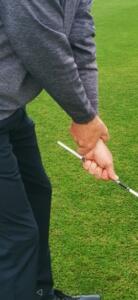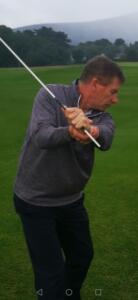Syncing the move away
The golf swing can be looked at from an effective viewpoint and also from an efficiency point of view – this is the latter. In truth this is one of those articles that clearly will not apply to everyone who plays golf for a number of reasons however I think it is worth asking yourself how this move applies to you. Reasons why it varies can be to do with poor posture and grip at address, or certain physical restrictions or limitations in the shoulder control. (A lot of juniors will swing the club on too much around the body to begin with because of natural lack of control in the shoulder area).
The area of the swing that I am focusing on is how we move the club away from the ball in our backswing and how this can affect the synergy between upper body, arms and club. I see a good number of golfer’s start the backswing with what could be described as a “too early body turn”. What I mean by this is the body has out run the arms early in the backswing. This puts the arms across or behind the body too early which leads to a lifting motion of the arms at end of the backswing rather than a continuous coiling action. From this position the slightly poorer player will start down with upper body action (body force as opposed to arm force) leading to an out to in path (slicing action), whereas those golfers who have managed to start the swing with lower part of the body may find the swing path becomes too much from in to out (hooking action).
The ideal (efficient) move is the arms move away creating the width in the backswing while the body engages the rotational movements. This culminates in the arms reaching the top of the backswing at the same time as the body turn giving us the real feeling if the swing being loaded with power. This movement can be checked about half way back in the backswing. If you look at your swing from a down the line view in a mirror or using a camera you would look at where your hands are in relation to your buttons on your shirt, ideally they will approximately in front of them at this point. The shaft line (plane) will be running through the trail shoulder. At this point the shoulders will have rotated between 80 and 90 degrees. To get a feel for this I use a drill holding the club with my left hand and gripping my left hand wrist with my right hand.


As the left shoulder is pushed away smoothly from the target, the hands should remain in front of the chest.
This is only looking at one piece of the golf swing jigsaw puzzle, but if you are looking to have a model that reduces the number of compensations then this is one of those efficient areas you can work on.


